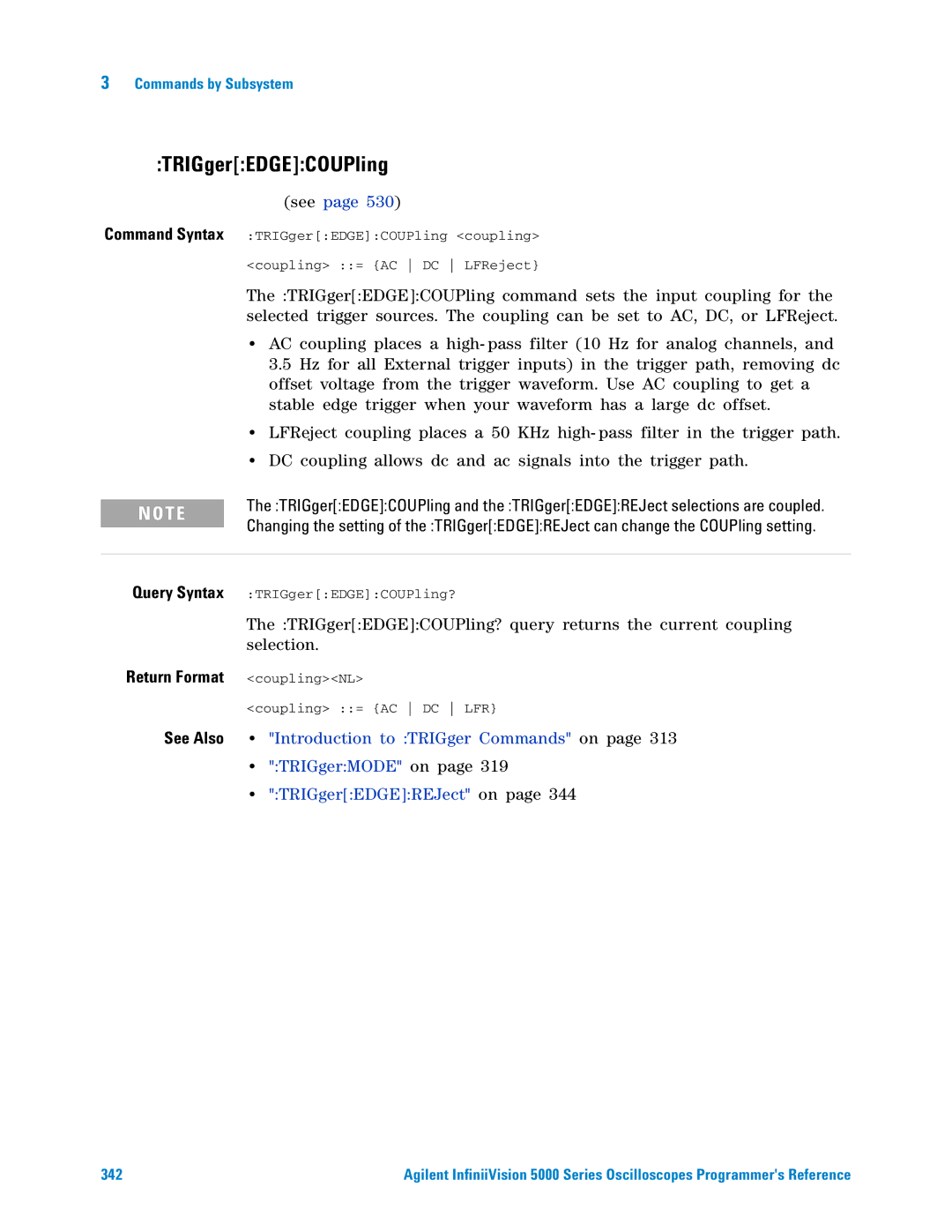
3Commands by Subsystem
:TRIGger[:EDGE]:COUPling
Command Syntax
N O T E
(see page 530)
:TRIGger[:EDGE]:COUPling <coupling>
<coupling> ::= {AC DC LFReject}
The :TRIGger[:EDGE]:COUPling command sets the input coupling for the selected trigger sources. The coupling can be set to AC, DC, or LFReject.
•AC coupling places a high- pass filter (10 Hz for analog channels, and 3.5 Hz for all External trigger inputs) in the trigger path, removing dc offset voltage from the trigger waveform. Use AC coupling to get a stable edge trigger when your waveform has a large dc offset.
•LFReject coupling places a 50 KHz high- pass filter in the trigger path.
•DC coupling allows dc and ac signals into the trigger path.
The :TRIGger[:EDGE]:COUPling and the :TRIGger[:EDGE]:REJect selections are coupled. Changing the setting of the :TRIGger[:EDGE]:REJect can change the COUPling setting.
Query Syntax | :TRIGger[:EDGE]:COUPling? |
| The :TRIGger[:EDGE]:COUPling? query returns the current coupling |
| selection. |
Return Format | <coupling><NL> |
| <coupling> ::= {AC DC LFR} |
See Also | • "Introduction to :TRIGger Commands" on page 313 |
| • ":TRIGger:MODE" on page 319 |
| • ":TRIGger[:EDGE]:REJect" on page 344 |
342 | Agilent InfiniiVision 5000 Series Oscilloscopes Programmer's Reference |
